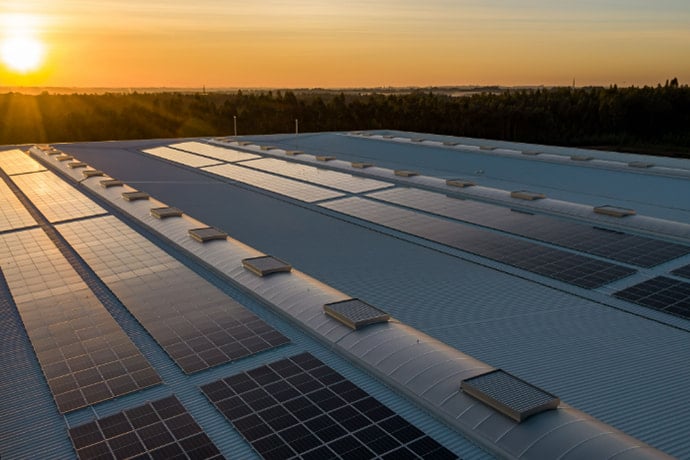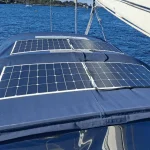In recent years, renewable energy has rapidly emerged as a cornerstone of the global transition towards a more sustainable and resilient future. This shift is driven by the urgent need to address climate change, reduce dependence on finite fossil fuels, and promote energy security. As the world grapples with environmental challenges and the consequences of over-reliance on traditional energy sources, renewable energy offers a pathway to a cleaner, more sustainable future. Among the myriad of renewable energy sources, solar, wind, geothermal, hydropower, ocean energy, and bioenergy stand out as powerful solutions capable of meeting humanity’s energy needs while minimizing environmental impact.
Solar Energy: The Sun as the Ultimate Power Source
Solar energy is often hailed as the most abundant renewable energy resource, with the potential to meet global energy demands many times over. The Earth receives solar energy at a rate approximately 10,000 times greater than the current rate of human consumption, making it a virtually limitless resource. Solar technologies, such as photovoltaic (PV) panels and solar thermal systems, convert sunlight into electricity and heat, respectively. These technologies are versatile, capable of powering everything from residential homes to large industrial complexes.
One of the most significant advancements in solar energy in recent years has been the dramatic reduction in the cost of solar panels. Over the past decade, the price of manufacturing solar panels has plummeted, making them not only affordable but often the cheapest source of electricity in many regions. This cost reduction, coupled with incentives and policies promoting clean energy, has led to a surge in solar energy adoption worldwide. With a typical lifespan of about 30 years, solar panels represent a long-term investment in clean energy that can significantly reduce carbon footprints. Despite varying levels of sunlight across different regions, solar energy can make a meaningful contribution to the energy mix in virtually every country, making it a key player in the global energy transition.

Wind Energy: Capturing the Power of the Wind
Wind energy, another key player in the renewable energy landscape, harnesses the kinetic energy of moving air to generate electricity. Wind turbines, both onshore and offshore, have evolved significantly, with taller towers and larger rotor diameters enhancing their efficiency and power output. The global potential for wind energy is vast, far exceeding current electricity production levels, making it a critical component of the renewable energy portfolio.
Offshore wind power, in particular, offers tremendous potential due to the stronger and more consistent wind speeds found over the oceans. While some of the best locations for wind energy generation are in remote areas, advancements in technology and infrastructure are making it increasingly feasible to tap into these resources. Furthermore, innovations in turbine design and grid integration are helping to overcome challenges associated with variability and intermittency. As technology continues to improve, wind energy is expected to play an even more prominent role in the global energy mix, contributing to a reduction in greenhouse gas emissions and enhancing energy security.
Geothermal Energy: A Reliable and Consistent Energy Source
Geothermal energy utilizes the thermal energy stored within the Earth’s interior to generate electricity and provide heating. This energy is extracted from geothermal reservoirs, which can be either naturally occurring (hydrothermal) or enhanced through hydraulic stimulation. Geothermal power plants have been operating reliably for over a century, making this a mature and dependable technology.
One of the key advantages of geothermal energy is its ability to provide a consistent and stable energy supply, independent of weather conditions. Unlike solar and wind energy, which are variable and dependent on environmental factors, geothermal energy offers a reliable source of base-load power. However, geothermal resources are not evenly distributed across the globe, with the most accessible and cost-effective sites located in regions with significant tectonic activity. Despite these limitations, geothermal energy remains a valuable complement to more variable renewable sources, and its role is likely to grow as technology advances and exploration methods improve.
Hydropower: The Power of Water
Hydropower is currently the largest source of renewable energy in the electricity sector. It harnesses the energy of water moving from higher to lower elevations, typically through dams and reservoirs, to generate electricity. In addition to generating power, hydropower reservoirs often serve multiple purposes, including providing drinking water, irrigation, and flood control.
Despite its widespread use, hydropower is not without challenges. It relies heavily on stable rainfall patterns, making it vulnerable to climate change-induced droughts and ecosystem disruptions. The construction of large dams can also have significant environmental impacts, leading to habitat loss and changes in local ecosystems. To address these concerns, small-scale hydropower systems are gaining attention as a more environmentally friendly alternative, particularly for remote communities where large infrastructure projects are not feasible.
Ocean Energy: A Frontier of Renewable Innovation
Ocean energy, which includes technologies that harness the kinetic and thermal energy of seawater, represents a relatively new and emerging field in the renewable energy sector. Wave and tidal energy systems are still in the prototype stage, but their theoretical potential is enormous, far exceeding current global energy needs. The development of ocean energy technologies is driven by the promise of a vast, untapped energy resource. While still in its infancy, the field holds great promise for the future, particularly for coastal regions with strong marine energy potential.
Bioenergy: The Oldest Form of Renewable Energy
Bioenergy is derived from organic materials, or biomass, such as wood, agricultural residues, and organic waste. While bioenergy has been used for centuries, modern bioenergy systems are more efficient and environmentally sustainable. However, large-scale bioenergy production can lead to deforestation and land-use changes, so it must be managed carefully to avoid negative environmental impacts. When managed responsibly, bioenergy can play a crucial role in the renewable energy mix, providing a flexible and reliable energy source that can be integrated into existing energy infrastructure.
Conclusion: The Future of Renewable Energy
Renewable energy sources offer a diverse and powerful set of tools for addressing the world’s energy needs while mitigating the impacts of climate change. As technology advances and costs continue to fall, renewable energy is poised to become the dominant force in the global energy landscape, paving the way for a cleaner, more sustainable future. The continued growth and integration of renewable energy will be essential in meeting global climate goals and ensuring energy security for generations to come.







